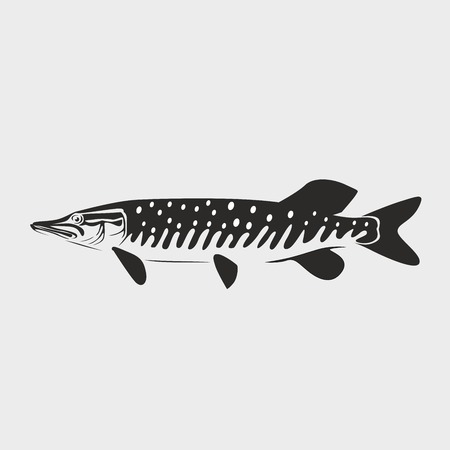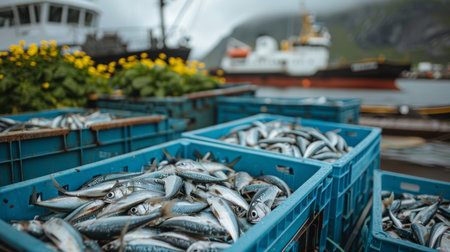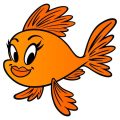Essential Tackle for British Cod Fishing
When it comes to targeting those chunky cod lurking off the British coast, choosing the right tackle can make or break your session. Local anglers know there’s no one-size-fits-all setup, but a few essentials will always give you a solid head start. Let’s run through what you’ll need in your kit bag if you’re serious about landing hefty cod, whether you’re casting from a shingle beach in Kent or braving the rocks in Northumberland.
Rods: Sturdy Yet Sensitive
A good cod rod for UK shores is typically between 12 and 14 feet long, offering enough length for distance casting while still giving you the backbone needed to handle big fish and heavy leads. Look for rods rated to cast weights of 4-8oz – that’ll cover most scenarios, especially when fishing into surf or rough ground where cod love to feed.
Reels: Reliability Is Key
Pair your rod with a robust fixed spool or multiplier reel, depending on personal preference. Fixed spools (in the 6000–8000 size range) are popular for their ease of use, while multipliers offer greater control for experienced casters. Whichever you choose, make sure it’s got a smooth drag and can hold plenty of line – big cod can put up a surprisingly strong fight.
Main Line Choices
Braid is increasingly favoured by UK cod anglers thanks to its sensitivity and lack of stretch, which helps detect subtle bites. A main line of 30–40lb braid is ideal for most marks, but don’t overlook classic mono – 18–25lb breaking strain will do the job nicely and offers more abrasion resistance over rocky ground. Always use a shockleader (usually 60–80lb mono) when casting heavy weights to avoid crack-offs.
Terminal Tackle: Rigs That Work
For cod fishing around Britain, pulley rigs and Pennell rigs are firm favourites among locals – they keep bait presented neatly and reduce snagging. Use strong hooks (size 3/0–5/0) and quality swivels; cod have tough mouths and there’s always a chance of hooking something even bigger! Don’t skimp on snood line strength either – go for 20–30lb fluorocarbon or mono, especially if crabs are present.
Local Tips from the Beach
Regulars swear by keeping their tackle simple and robust. “You want gear that can take a beating,” says one Sussex shore angler. “Heavy surf or kelp beds? Don’t be afraid to step up your line strength.” And remember – investing in decent tackle means fewer lost fish and more memorable sessions under those wild British skies.
2. Baits and Rigs – What Works for Big UK Cod
When it comes to cod fishing along the British coast, your choice of bait and rig can truly make or break your session. Over years of standing on shingle beaches, battered piers, and rocky outcrops, Ive seen certain baits and rigs consistently outfish the rest—especially when those chunky winter cod are on the feed.
Natural Baits: The Proven Winners
If you’re after a proper British cod, nothing beats the aroma and presentation of fresh natural baits. Here’s a quick rundown of what should be in your bait bucket:
| Bait | Why It Works | Best Time/Location |
|---|---|---|
| Lugworm (Black or Blow Lug) | Oozes scent, naturally found on many beaches, irresistible to cod | All rounder; best from sandy or muddy marks after a good blow |
| Peeler Crab | Pungent and full of juices; top choice for big winter cod | Rocky marks; late spring to early summer but works in winter too |
| Squid (Whole or Strips) | Tough texture, stays on hook well, gives extra visual appeal | Mixed in with worm baits or used alone on rougher days |
| Mackerel Strip | Oily and flashy; good for larger cod, especially after dark | Piers and deeper water venues during autumn/winter |
| Mussel & Clam Cocktail | Soft but deadly; perfect as a tipping bait to add scent trail | Muddy estuaries and close-in gulleys at low tide |
Artificial Lures: When to Use Them?
Lures are less traditional for cod off the shore but can be effective from boats or in deep water. Shads, soft plastics, and large jelly worms work well when worked slowly near the bottom—especially around structure. Try colours like black/blue in murky water or white/silver on clear days.
Classic Cod Rigs That Deliver Results
No matter how good your bait is, presenting it right is key. Here are three classic rigs every UK cod angler should know:
| Rig Name | Description & Best Use |
|---|---|
| Pulley Pennel Rig | Great for casting big baits; keeps fish away from snags during retrieve. Ideal over rough ground. |
| Two-Hook Flapper Rig | Covers more area with two smaller baits; perfect for picking up bonus whiting while targeting cod. |
| Clip Down Rig (Single Hook) | Streamlined for distance casting with heavy leads; presents one large bait cleanly for specimen cod. |
A Few Tips From the Beach…
I’ve found that combining lugworm with squid (“cod cocktail”) often outperforms single baits when big girls are lurking about. Always match your rig strength to the ground—use heavier snoods and hooks if fishing among kelp beds or rocks. And remember, freshness is king: don’t skimp on bait quality if you want that double-figure cod bending your rod this season!

3. Key Coastal Hotspots and Timing
If you’re keen on landing a personal best cod along the British coast, knowing where and when to fish is half the battle. Over the years, I’ve had my fair share of red-letter days and blanks, so here’s some honest advice from the water’s edge.
Productive Spots Around the UK
Let’s start up north—Northumberland’s rock marks like Craster and Seahouses are legendary for chunky winter cod. The exposed beaches of Holderness in East Yorkshire are another top pick; think Spurn Point or Easington, especially after a good northerly blow stirs things up. Moving down to the South Coast, places like Chesil Beach in Dorset can produce cracking cod during colder snaps, while Kent’s Dungeness always seems to throw up a surprise or two when the temperature dips.
Timing Your Sessions
Success often comes down to timing as much as location. Generally, the colder months—from late October right through to March—are prime time for big cod, as they move inshore to feed before spawning. As for tides, I’ve found that fishing the flood and first couple of hours of the ebb produces most bites, especially if there’s been a good sea running.
Weather and Conditions Matter
If you’re looking for that PB, don’t underestimate the weather. A bit of colour in the water after a storm works wonders—cod feel bolder under cover and come in closer to forage. Avoid flat calm conditions unless you’re really localised over rough ground. And finally, keep an eye on barometric pressure: a steady drop just before a front often spells feeding time!
Every venue has its quirks, so it pays to chat with locals or pop into your nearest tackle shop for up-to-date info. With patience and some local know-how, your next session could be one to remember.
4. Shore Fishing Versus Boat Fishing
If you’re keen to land a British cod of serious proportions, choosing between shore and boat fishing is a real fork in the road. Both approaches have their loyal followers along the British coast, and after many sessions spent on windswept rock marks and aboard choppy charter boats, I’ve come to appreciate the unique tactics and tackle each method demands.
A Practical Comparison: Tactics and Tackle
Let’s break it down with a side-by-side look at what sets these two apart. Whether you’re braving the icy spray from a storm beach or dropping baits over an inshore wreck, here’s what you can expect:
| Shore Fishing | Boat Fishing | |
|---|---|---|
| Main Tackle | 12-15ft beachcaster rods, heavy surf reels (fixed spool or multiplier), 20-30lb mono or braid | 20-30lb class boat rods, compact multipliers, 30-50lb braid for abrasion resistance |
| Terminal Rigs | Pulley Pennel rigs, clipped down for distance; 5/0-6/0 hooks for big baits | Running ledger rigs or simple flowing traces; large hooks for whole squid/mackerel baits |
| Bait Choice | Lugworm, squid wraps, whole peeler crab (often double-pumped for scent) | Whole squid, cuttlefish, mackerel flappers – large and smelly is the ticket offshore |
| Main Challenges | Distance casting needed; strong tidal run; snags from rocks/weed | Drift speed over wrecks; tangles in tide; handling bigger fish in deep water |
From Rock Marks to Wreck Trips: Local Insights
I’ll never forget a January session on the Yorkshire coast, huddled behind my tripod as Atlantic rollers crashed in. It took a hefty cast just beyond the breakers to reach a gulley where cod were holding. A pulley pennel rig armed with lug and squid cocktail did the trick – but it was hard graft compared to boat trips out of Whitby. On deck with the local skipper, we drifted over productive wrecks using hefty pirk lures and big baits. The bites offshore were more brutal and the cod ran heavier – but so did the tangles if you weren’t sharp!
Which Method Suits You?
If you love solitude and don’t mind casting until your arms ache, shore fishing offers wild scenery and a real sense of achievement when that rod hoops over. For those after numbers and size – especially during winter runs – hopping on a charter boat can put you right among the action. Either way, matching your tackle to the environment is key: go heavy enough to handle both fish and elements.
5. Top Techniques for Success
Step-by-Step Strategies for Presenting Your Bait
If you’re keen to put a proper bend in your rod and haul up a British cod that’ll make your mates jealous, getting your bait presentation right is absolutely vital. From my time fishing the rugged North East beaches to the bustling Kent piers, I’ve learned there’s no substitute for attention to detail.
1. Choose the Right Rig
For most UK cod marks, a simple pulley pennel rig works wonders, especially when paired with sizeable baits. The pennel setup allows you to present large lugworm or squid baits neatly, keeping them streamlined for those distance chucks. Secure your bait tightly with elastic thread—nothing worse than watching your offering unravel mid-cast!
2. Read the Water Like a Local
British weather can be fickle, but so can our tides and water clarity. Always check tide times—cod often feed two hours either side of high water, especially after a good blow when the sea is coloured and lively. On rocky marks, look for kelp beds and gulleys where cod lurk waiting for food washed out by the surf. Flat sandy stretches? Aim to cast just behind the breaking waves where food collects.
3. Perfect Your Casting
You don’t always need to blast it to France! Sometimes, especially on rougher days, the cod come right into the gutter at your feet. Start by casting at different distances and let each soak for a while—you’ll soon clock where the bites are coming from.
4. Stay Alert & Adapt
Keep an eye on rod tip rattles and always be ready to change tactics if things go quiet. If whiting or dogfish keep nicking your bait, try upping your hook size or switching to tougher peeler crab or whole squid baits—cod love them, but smaller fish struggle.
Real-World Session Tips:
I remember one cold January night on the Holderness coast: bites were slow until I switched from lug-and-mackerel cocktails to straight black lug tipped with squid strip—bang, three cod in an hour! Don’t be afraid to tweak your approach based on what’s happening right in front of you.
Master these step-by-step techniques, and you’ll give yourself every chance of landing that cracking British cod this season—tight lines!
6. Playing, Landing, and Handling Big Cod
There’s nothing quite like the buzz of hooking into a hefty cod off our British shores, but the real skill comes in playing, landing, and handling your prize catch with care. Here’s some friendly advice from the water’s edge to help you confidently bring those big fish to hand—whether you’re after that photo for your mates or planning a responsible release.
Playing Your Cod: Patience Pays Off
Once you feel that tell-tale thump and your rod bends double, don’t rush it! Keep a steady pressure on the fish and let your rod do the work. Big cod are notorious for their dogged runs and heavy lunges, especially around rough ground or wrecks. Avoid tightening your drag too much—steady tension is key. Let the cod tire itself out while you maintain control, gently pumping the rod and retrieving line when you can.
Landing Like a Pro
As your cod nears the shore or boat, things can get lively. Make sure your landing net is ready—preferably a large one with rubberised mesh to protect the fish’s slime coat. If you’re fishing from rocks or piers, consider using a drop net for extra safety. Get your mate to lend a hand if possible; teamwork makes all the difference when hoisting up a lunker. Always support the full weight of the fish to avoid injury.
Handling With Care: For Keeps or Release
Whether you’re taking home supper or releasing your catch, good practice is vital. Wet your hands before handling cod to preserve their protective coating. If keeping the fish, dispatch it swiftly and humanely. If releasing, minimise time out of water—use barbless hooks where possible for easier unhooking, and gently revive the fish by holding it upright in the water until it kicks away strong. A quick snap for the album is fine, but always put the welfare of the fish first.
By respecting these simple steps, you’ll not only enjoy more successful sessions but also play your part in keeping Britain’s cod stocks healthy for years to come—tight lines and happy fishing!

